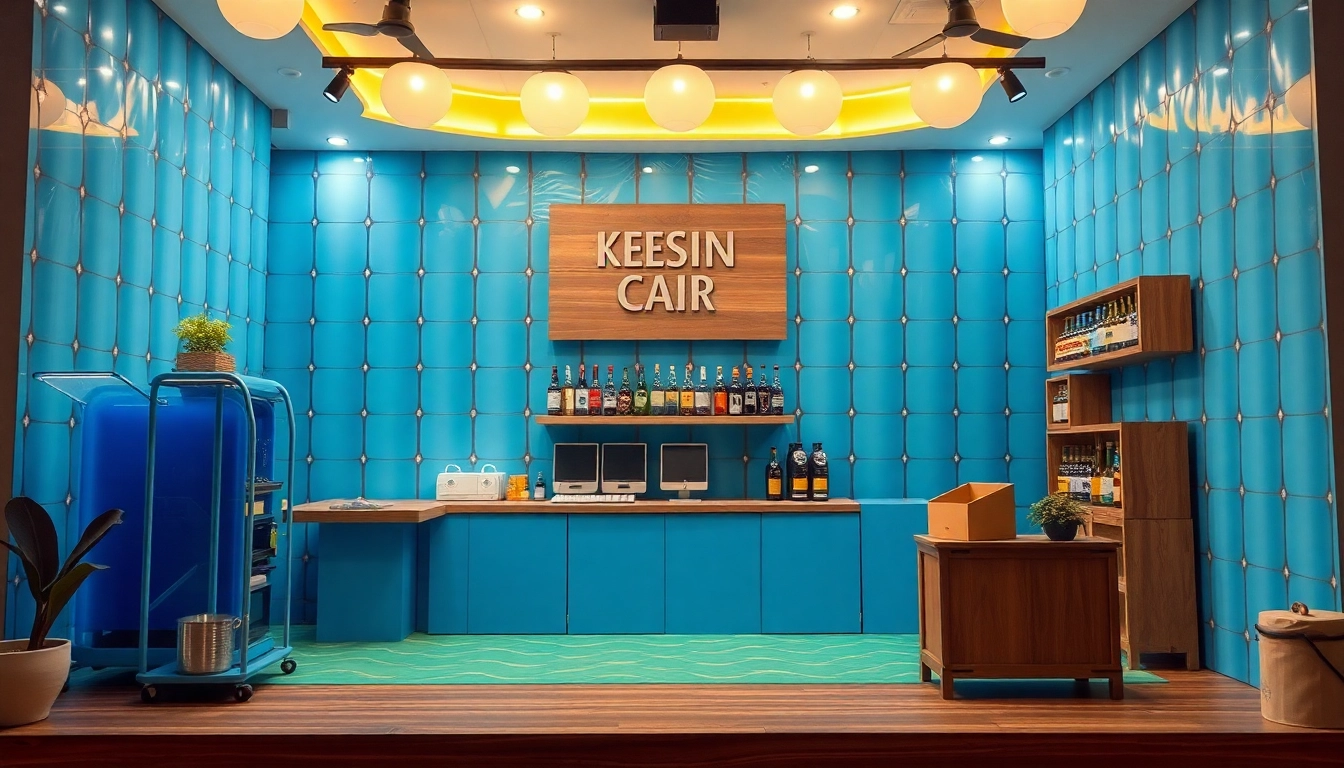Understanding Liquid Packaging Machines
What is a Liquid Packaging Machine?
A liquid packaging machine is a specialized piece of equipment designed to fill, seal, and package liquid products into containers like bottles, pouches, or cartons. These machines are crucial in various industries, including food and beverage, pharmaceuticals, cosmetics, and chemicals, where precision and efficiency are paramount. They operate on automated systems that enhance speed and consistency, ensuring that products are safely sealed for distribution and storage. With the increasing demand for packaged goods, the role of liquid packaging machines is more essential than ever.
Types of Liquid Packaging Machines
Liquid packaging machines vary widely in design and functionality. The primary types include:
- Gravity Fillers: These machines use gravitational force to fill containers and are best suited for thin liquids like water and juices.
- Piston Fillers: Ideal for thicker liquids such as sauces and creams, piston fillers push measured amounts of liquid into containers using a piston mechanism.
- Pump Fillers: These machines use pumps to deliver liquid into containers, making them suitable for a variety of viscosities and product types.
- Vacuum Fillers: Utilizing a vacuum to pull liquid into containers, these machines are particularly effective for products that must avoid foaming or splashing.
- Pre-Made Pouch Fillers: These machines fill pre-formed pouches or bags with liquids, widely used in packaging beverages and liquids like soups and sauces.
Key Features to Look For
When selecting a liquid packaging machine, several key features should be considered:
- Speed and Efficiency: Look for machines that optimize filling speeds without compromising accuracy, as productivity is essential in packaging operations.
- Flexibility: A machine that can accommodate various container sizes and types allows for versatility in production lines.
- Precision: Accurate filling is crucial, especially for products sold by volume or weight. Technologies that enhance precision should be prioritized.
- Ease of Cleaning: Machines that are easy to disassemble and clean help maintain hygiene standards, particularly in food and pharmaceutical applications.
- Durability: Selecting robust materials and construction ensures that the machine will withstand the rigors of continuous operation.
Benefits of Using Automated Liquid Packaging Solutions
Improved Efficiency and Speed
Automated liquid packaging solutions significantly boost efficiency and speed in production lines. These machines are designed to operate at high speeds while maintaining consistent filling levels, which translates to increased output and reduced labor costs. For instance, modern liquid packaging machines can fill hundreds to thousands of containers per hour, depending on the size and type of the machine. By minimizing manual intervention, businesses can achieve a more streamlined workflow and better meet market demands.
Reduced Labor Costs
Investing in automated packaging machinery results in decreased reliance on manually operated processes. With fewer personnel required for packaging tasks, companies can witness significant reductions in labor costs. Automation allows businesses to allocate their workforce to more value-added tasks, improving overall productivity and resource efficiency. Additionally, automated systems can reduce labor-related errors, leading to more consistent product quality and less waste.
Enhanced Product Safety and Integrity
One of the most critical advantages of using liquid packaging machines is the enhanced safety and integrity of the packaged products. Automated systems minimize human contact with the products, reducing the risk of contamination. Moreover, features such as vacuum sealing and tamper-proof mechanisms in packaging machines help preserve the product’s quality, extending shelf life. This is particularly vital in industries like food and pharmaceuticals, where maintaining product integrity is crucial for consumer safety and regulatory compliance.
Choosing the Right Liquid Packaging Machine Supplier
Evaluating Supplier Experience and Reputation
Selecting the right supplier is a pivotal step in ensuring your liquid packaging needs are met effectively. It’s essential to evaluate the supplier’s experience in the industry. Established suppliers with a proven track record can provide insights into the best machinery for your specific application. Additionally, researching customer reviews and testimonials can help gauge the reputation of the supplier in terms of reliability, service, and post-purchase support.
Understanding Service and Support Options
Reliable after-sales service and technical support are critical factors to consider when choosing a liquid packaging machine supplier. Inquire about the availability of maintenance services, warranty terms, and support during the installation and commissioning phases. A supplier that stands behind their product with robust support ensures that any technical issues can be resolved efficiently, minimizing downtime in your production line.
Requesting Product Demonstrations and Trials
Before making a final decision, it is advisable to request product demonstrations or trials with the potential liquid packaging machines. This hands-on experience allows you to assess the machine’s performance, ease of operation, and compatibility with your production line. It’s also an opportunity to involve staff who will operate the equipment, ensuring that their feedback contributes to the buying decision.
Implementing Liquid Packaging Solutions in Your Business
Steps to Integrate New Equipment
Integrating a new liquid packaging machine into an existing production line requires careful planning. The following steps can help facilitate a smooth transition:
- Assessment: Conduct an assessment of the current production line to identify bottlenecks and areas that need improvement.
- Planning: Develop a detailed plan for the integration, focusing on the layout of the new machine and how it will fit within the existing workflow.
- Installation: Work closely with the supplier to ensure proper installation of the new equipment, following manufacturer guidelines.
- Testing: Before going live, conduct thorough testing to ensure the machine operates as expected and meets production standards.
- Launch: Once testing is complete and initial hiccups resolved, launch production with the new machine optimally integrated into the workflow.
Training Your Staff
Comprehensive training for staff operating the new liquid packaging machine is vital for successful implementation. Ensure that your training program covers aspects such as:
- Operational Procedures: Teach employees how to operate the machine efficiently and handle any adjustments needed during production.
- Maintenance Techniques: Equip staff with knowledge about routine maintenance practices to keep the machine in optimal condition.
- Safety Protocols: Emphasize safety protocols to prevent accidents and ensure compliance with safety regulations during machine operation.
Monitoring Performance Metrics
After the new liquid packaging machine is in operation, it is essential to monitor performance metrics to evaluate its efficiency and impact on production. Key metrics to track may include:
- Filling Accuracy: Measure the exact amount filled into each container to identify any discrepancies.
- Cycle Time: Monitor the time taken per filling cycle to gauge speed and efficiency over time.
- Downtime: Keep records of any unexpected machine downtime to identify reasons and implement solutions.
- Product Quality: Regularly assess the quality of packaged products to ensure standards are met and maintained.
Future Trends in Liquid Packaging Technology
Sustainability in Packaging Innovations
Sustainability is increasingly influencing packaging technologies, as businesses seek to reduce their environmental impact. Innovations in liquid packaging machines are focusing on using eco-friendly materials and reducing waste in the packaging process. Companies are considering biodegradable pouches or containers made from recycled materials, aligning their operations with consumers’ growing preferences for sustainable products.
Smart Packaging Technologies
The rise of smart packaging technologies is another trend shaping the future of liquid packaging. Incorporating IoT (Internet of Things) capabilities into packaging machines enhances operational efficiency by enabling real-time monitoring of production processes. Data analytics can offer insights into machine performance, allowing for proactive maintenance and optimization of production workflows.
Adapting to Market Changes
As consumer preferences and market demands evolve, liquid packaging machines must be adaptable to accommodate changes. The ability to quickly switch between packaging formats or adjust to new product specifications will be increasingly important. Suppliers that offer customizable and flexible solutions will have a competitive advantage in a rapidly changing marketplace, ensuring that their clients can meet consumer demands effectively.
In conclusion, understanding and implementing effective liquid packaging solutions is essential for businesses looking to enhance their operational efficiency, product safety, and overall competitiveness. By choosing the right Liquid Packaging Machine Supplier and keeping an eye on industry trends, companies can future-proof their packaging operations and thrive in an increasingly competitive landscape.



